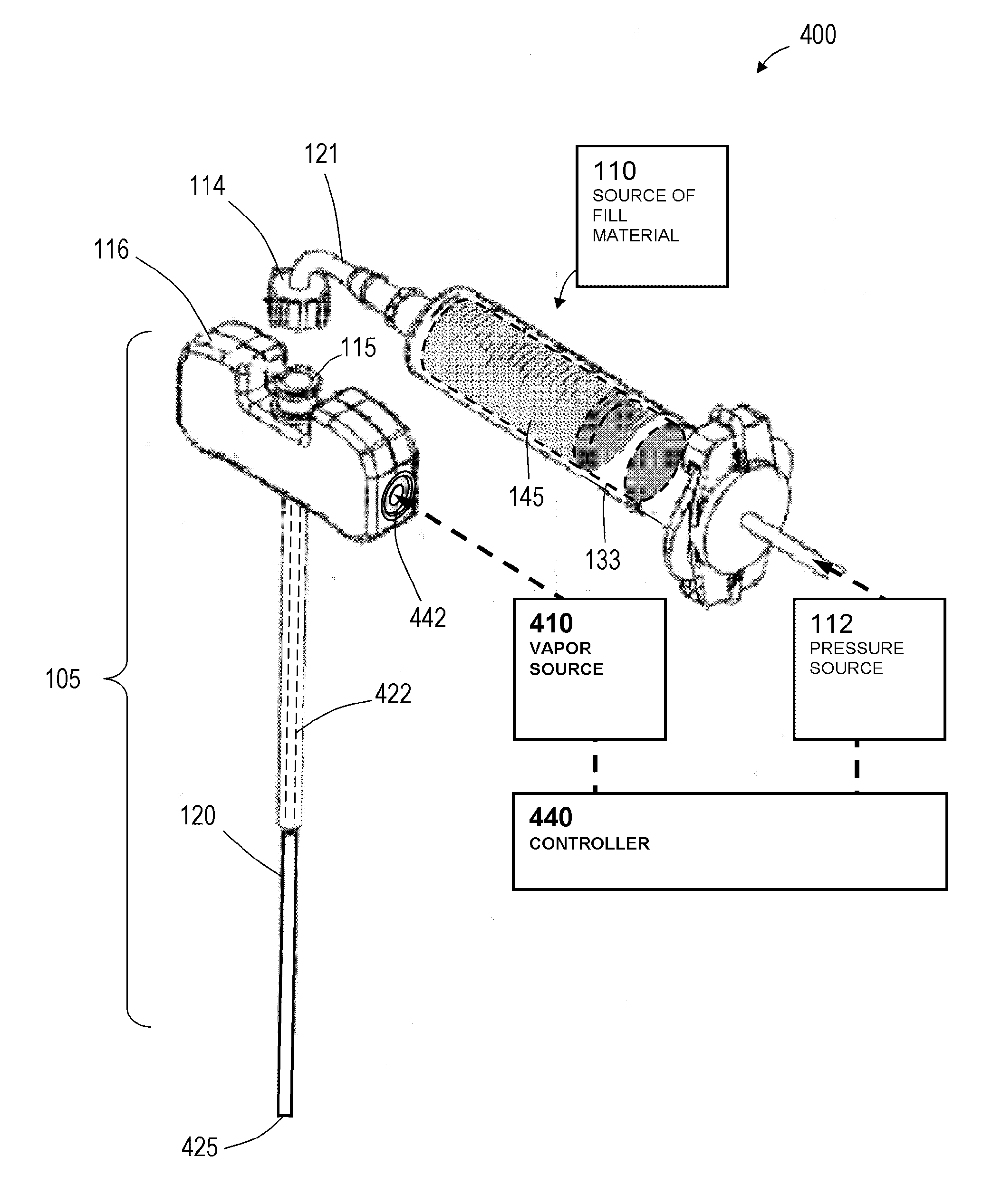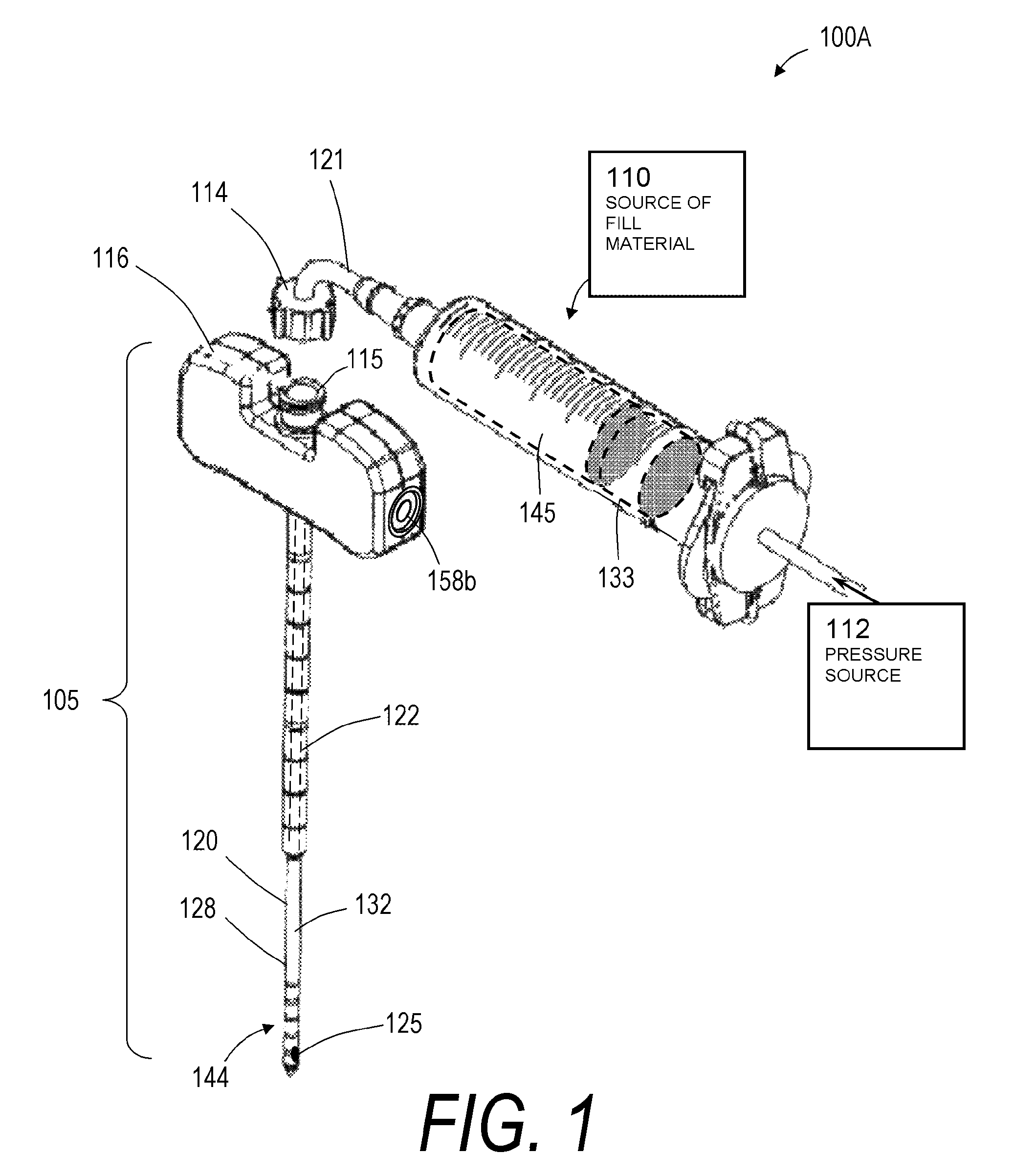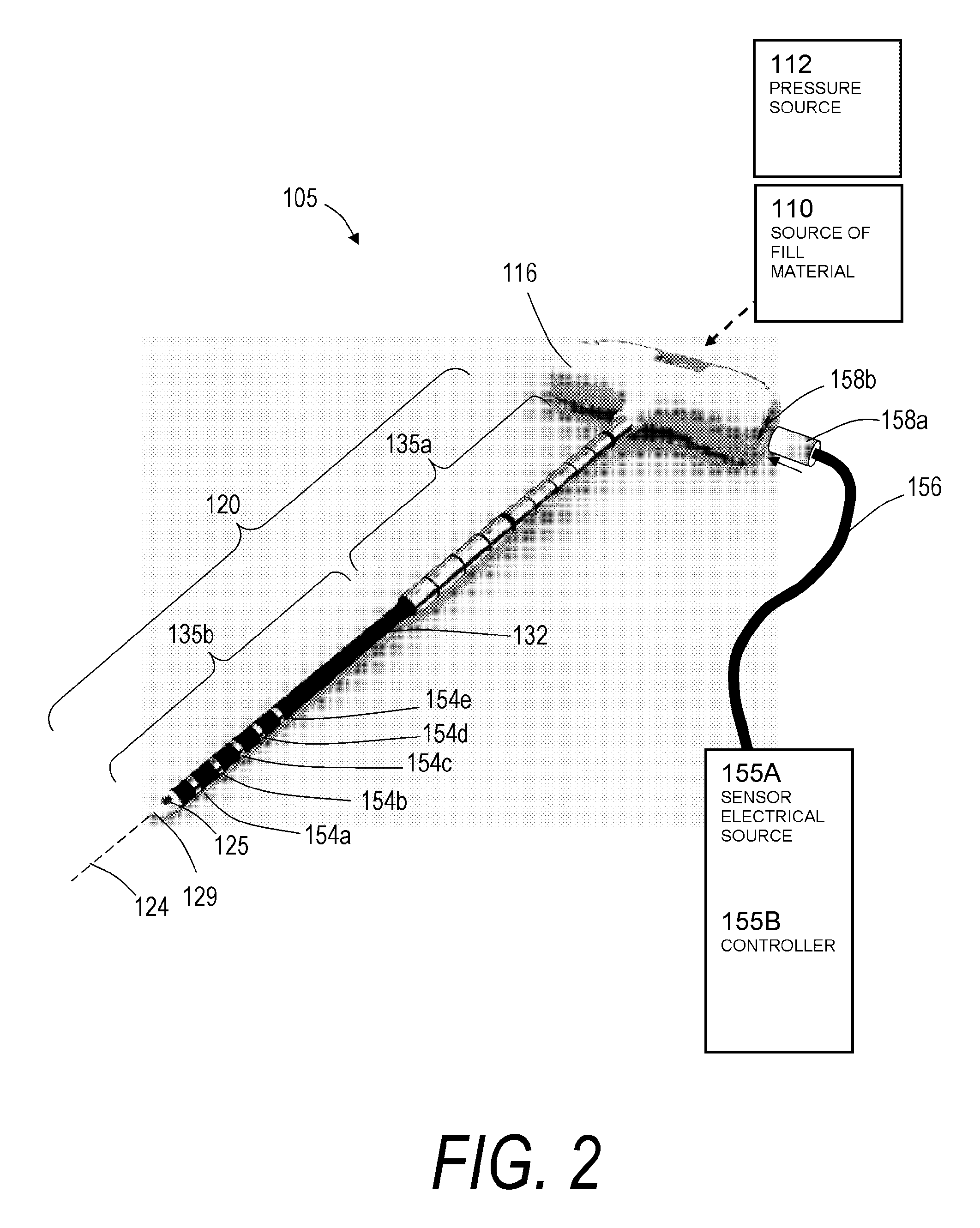Bone treatment systems and methods
a bone fracture and compression technology, applied in the field of vertebral compression fracture treatment systems, can solve the problems of fractures in the spine and hips, affecting mobility and quality of life, and the medical advances aimed at slowing or arresting bone loss from aging have not provided solutions to this problem, so as to accelerate polymerization, prevent further cement migration, and prolong the working time of bone cemen
- Summary
- Abstract
- Description
- Claims
- Application Information
AI Technical Summary
Benefits of technology
Problems solved by technology
Method used
Image
Examples
Embodiment Construction
[0036]For the purpose of understanding the principles of the invention, reference will now be made to the embodiments illustrated in the drawings and accompanying text that describe different embodiments of the invention. Referring to FIGS. 1-2, one embodiment of a bone fill introducer or injector system 100A is shown that can be used for treatment of the spine in a vertebroplasty procedure. The system 100A includes a bone cement injector 105 that is coupled to source 110 of a bone fill material wherein the injection of the fill material is carried out by a pressure mechanism or source 112 operatively coupled to the source 110 of bone fill material. In one embodiment, as in FIG. 1, the pressure source 112 can be a hydraulic actuator that can be computer controlled, but the scope of the invention includes a manually operated syringe loaded with bone fill material, or any other pressurized source of fill material. The source 110 of fill material includes a coupling or fitting 114 for ...
PUM
 Login to View More
Login to View More Abstract
Description
Claims
Application Information
 Login to View More
Login to View More - R&D
- Intellectual Property
- Life Sciences
- Materials
- Tech Scout
- Unparalleled Data Quality
- Higher Quality Content
- 60% Fewer Hallucinations
Browse by: Latest US Patents, China's latest patents, Technical Efficacy Thesaurus, Application Domain, Technology Topic, Popular Technical Reports.
© 2025 PatSnap. All rights reserved.Legal|Privacy policy|Modern Slavery Act Transparency Statement|Sitemap|About US| Contact US: help@patsnap.com



